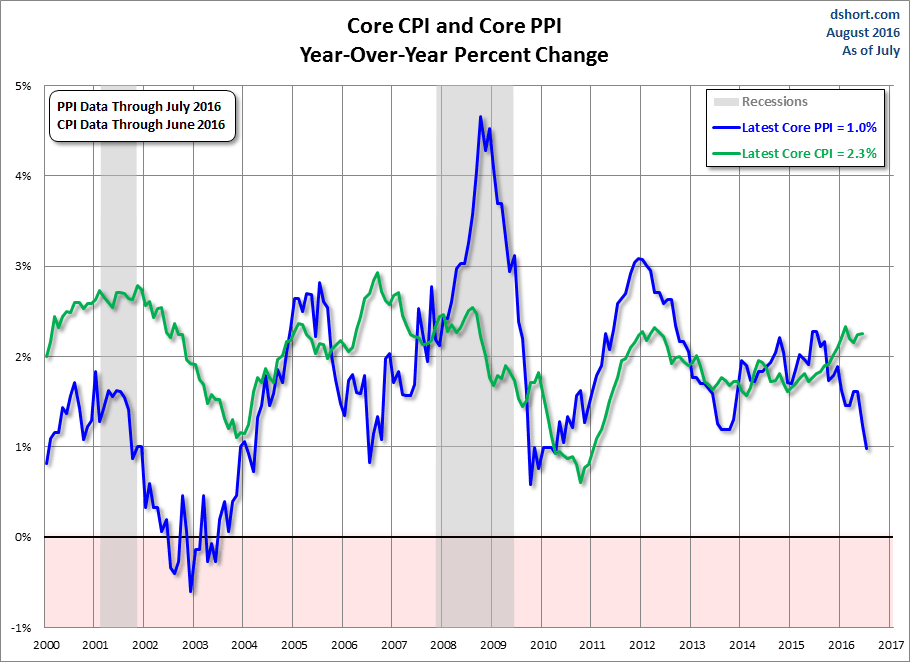Courtesy of Doug Short.
Today’s release of the Producer Price Index (PPI) for January shows a smally month-over-month increase in headline inflation pressures. The seasonally adjusted finished goods number was up 0.1% MoM and up 4.1% year-over-year, a decline from last month’s 4.8%. The interim YoY high was 7.2% in September of last year. However, Core PPI (ex food and energy) was up 0.4% MoM, the biggest monthly gain since last July. The YoY 3.0% was unchanged last month. At this level Core PPi is the highest since June 2009. Briefing.com had posted a MoM consensus forecast of 0.3% for Headline PPI and 0.2% for Core PPI. Here are a couple of snippets from the news release:
Finished core: The index for finished goods less foods and energy moved up 0.4 percent in January, the largest increase since a 0.5-percent rise in July 2011. In January, about forty percent of the finished core advance can be attributed to prices for pharmaceutical preparations, which climbed 2.0 percent. Higher prices for light motor trucks and household appliances also were factors in the increase in the finished core index. (See table 2.)
Finished energy: The index for finished energy goods fell 0.5 percent in January, the fourth straight monthly decrease. Leading the January decline, prices for residential electric power moved down 1.7 percent. Falling prices for residential natural gas also contributed to the decrease in the index for finished energy goods.
Finished foods: Prices for finished consumer foods moved down 0.3 percent in January after falling 0.9 percent in December. Over eighty percent of the January decline can be attributed to the index for fresh and dry vegetables, which fell 8.8 percent. More…
Now let’s visualize the numbers with an overlay of the Headline and Core (ex food and energy) PPI for finished goods since 2000, seasonally adjusted. As we can see, Core PPI declined significantly during 2009 and increased modestly in 2010. The rate of increase moved higher in 2011.
As the next chart shows, the Core Producer Price Index is more volatile than the Core Consumer Price Index. For example, during the last recession producers were unable to pass cost increases to the consumer. Likewise in 2010 the Core PPI generally rose while Core CPI generally fell. But over the past year these two core metrics have been moving in tandem.
Tomorrow will bring us the more widely followed CPI inflation indicator.




